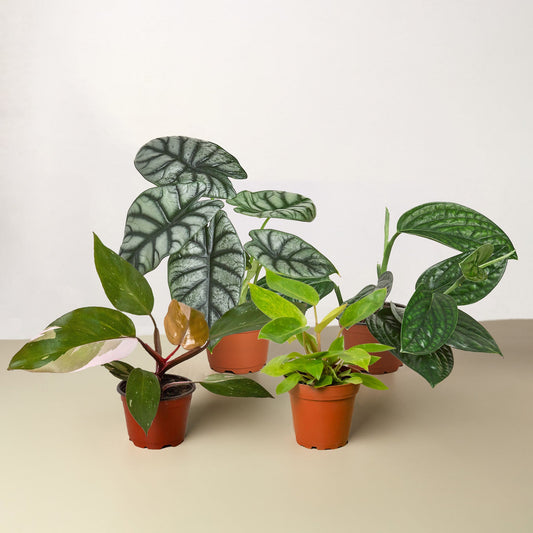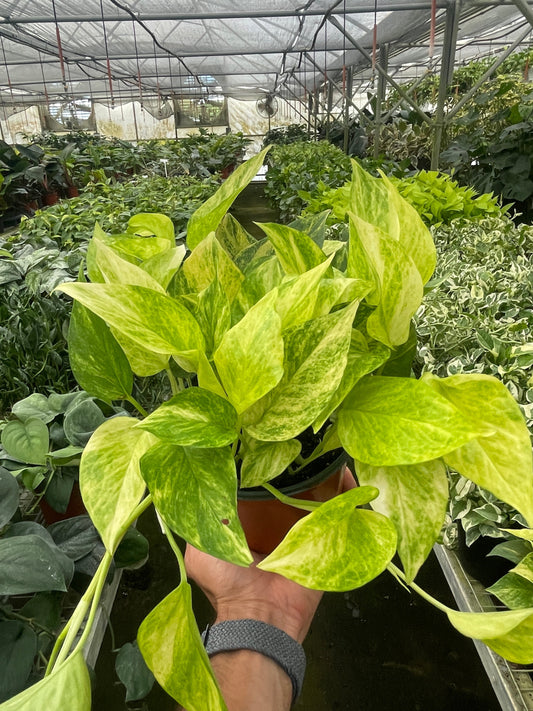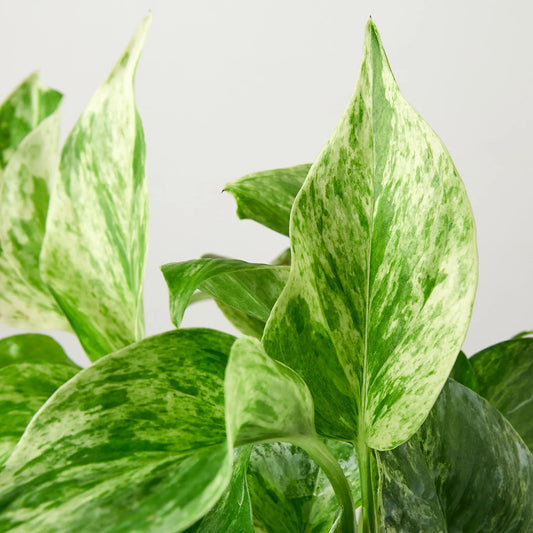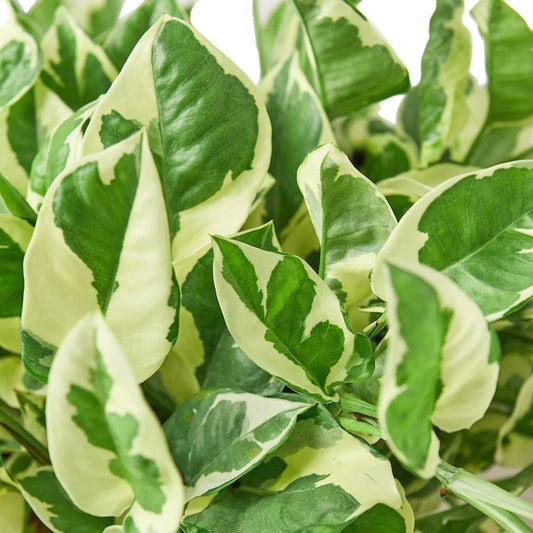How to Grow and Care for Kalanchoes
Cafe Planta Team
If you're a plant lover looking for a splash of color and a touch of exotic charm in your home, you might want to consider adding a Kalanchoe to your collection. These vibrant succulents are not only easy to care for but also offer a delightful burst of blooms that can brighten up any room.
In this article, we'll explore everything you need to know about growing and caring for Kalanchoes. From understanding their light and watering needs to tackling common pests and incorporating them into your home decor, we've got you covered.
Getting to Know Kalanchoes
Kalanchoes, belonging to the Crassulaceae family, are native to Madagascar and other tropical regions. These plants are well-loved for their thick, fleshy leaves and clusters of small, vibrant flowers. The most common varieties include the Kalanchoe blossfeldiana, known for its cheerful blooms, and Kalanchoe tomentosa, or the "Panda Plant," with its fuzzy leaves.
One of the reasons Kalanchoes are such popular houseplants is their adaptability. They can thrive indoors with minimal fuss, making them an excellent choice for both seasoned plant parents and beginners. If you've ever accidentally neglected a plant, you'll appreciate the resilience of these charming succulents.
Interestingly enough, Kalanchoes are also known for their unique flowering cycle. They bloom in response to shorter daylight hours, typically during the winter months. This makes them a perfect pick for bringing some life and color into your home when other plants might be dormant.
Choosing the Right Spot
When it comes to finding the perfect spot for your Kalanchoe, light is your best friend. These plants adore bright, indirect sunlight. Think of a spot near a south or west-facing window where they can soak up plenty of light but aren't exposed to the harsh rays of the midday sun.
If you're wondering how to gauge the light levels in your home, here's a simple tip: place your hand between the plant and the window. If you see a well-defined shadow, you're likely in a spot that offers bright indirect light. On the other hand, if the shadow is faint or barely visible, you might need to move your Kalanchoe closer to a window.
However, don't worry if your home doesn't have the perfect lighting conditions. Kalanchoes are quite forgiving and can adapt to lower light situations. Just keep in mind that they might not bloom as profusely in dimmer spots. A little experimentation might be necessary to find the sweet spot that keeps your plant happiest.
Watering Wisely
Watering can be a bit of a balancing act with Kalanchoes, but once you get the hang of it, you'll find it quite straightforward. These plants are succulents, meaning they store water in their leaves, so they prefer to dry out between waterings.
A good rule of thumb is to water your Kalanchoe when the top inch of soil feels dry to the touch. This usually means watering every 1-2 weeks, depending on the humidity and temperature in your home. During the winter months, you can water even less frequently as the plant's growth slows down.
One thing to watch out for is overwatering, which is a common mistake with succulents. Ensure your pot has drainage holes to prevent water from sitting at the bottom, which can lead to root rot. If you're unsure, it's always better to err on the side of underwatering.
Here's a handy tip: if you notice your Kalanchoe's leaves becoming soft or translucent, it's a sign of overwatering. On the flip side, if the leaves start to wrinkle or shrivel, your plant probably needs a drink.
Picking the Perfect Pot and Soil
Choosing the right pot and soil is essential for keeping your Kalanchoe happy. Since these plants dislike sitting in water, opt for a pot with drainage holes. Terracotta pots are a fantastic choice as they allow excess moisture to evaporate, which helps prevent overwatering issues.
When it comes to soil, Kalanchoes prefer a well-draining mix. You can use a store-bought cactus or succulent soil, which is formulated to provide the perfect balance of drainage and nutrients. If you're a DIY type, you can make your own mix by combining equal parts potting soil, perlite, and coarse sand.
Repotting is usually only necessary every couple of years, or when you see roots poking out of the drainage holes. When you do repot, choose a pot that's just one size larger to avoid overwhelming your plant with too much soil, which can retain excess moisture.
Feeding Your Kalanchoe
While Kalanchoes aren't heavy feeders, a little fertilizer can go a long way in promoting lush growth and vibrant blooms. During the growing season, which is typically spring and summer, you can feed your plant with a balanced, water-soluble fertilizer every month or so.
Be sure to follow the instructions on the fertilizer package and avoid over-fertilizing, as this can lead to salt build-up in the soil. If you're ever in doubt, it's better to under-fertilize than overdo it.
During the fall and winter months, you can ease up on the feeding, as the plant's growth naturally slows down. This resting period is also important for encouraging blooming, so don't worry if your Kalanchoe seems to be taking a break.
Pruning and Maintaining Blooms
Pruning your Kalanchoe not only keeps it looking tidy but also encourages new growth and more flowers. After your plant finishes blooming, you can trim back the spent flower stems to tidy up the plant and redirect energy into the leaves.
If you notice any leggy growth, you can also prune back the stems to encourage a bushier shape. Simply cut the stem just above a leaf node, and you'll likely see new growth emerge from that point.
Deadheading, or removing spent flowers, is another simple way to keep your Kalanchoe looking its best. Not only does this improve the plant's appearance, but it also encourages more blooms. Simply pinch off or snip away the faded flowers to make room for new growth.
Dealing with Pests
While Kalanchoes are generally quite resilient, they can occasionally fall prey to pests like aphids, mealybugs, and spider mites. Luckily, these infestations are usually easy to manage with a little attention and care.
If you spot any unwelcome visitors, the first step is often a gentle spray with water to dislodge them. For more stubborn infestations, you can use a solution of water and mild dish soap, or opt for a commercial insecticidal soap.
Regularly inspecting your plants and wiping down the leaves with a damp cloth can also help prevent pest problems from getting out of hand. Remember, a healthy plant is less likely to attract pests, so maintaining good overall care is your best defense.
Encouraging Reblooms
One of the joys of growing Kalanchoes is their ability to rebloom. While they naturally flower in response to shorter daylight hours, you can encourage blooming by simulating these conditions.
To do this, place your Kalanchoe in a dark room or cover it with a box for about 14 hours each night for six weeks. During the day, it should still receive bright, indirect light. With a little patience, you'll be rewarded with another round of beautiful blooms.
It's also important to ensure your plant is well-cared for during this period, with proper watering and feeding. A healthy, happy plant is more likely to put on a stunning floral display.
Incorporating Kalanchoes into Your Decor
Beyond their care, Kalanchoes make for a stunning addition to any home decor. Thanks to their vibrant flowers and unique leaf shapes, they can complement a wide range of interior styles.
For a minimalist look, consider pairing a single Kalanchoe in a sleek, neutral pot with other succulents or cacti. Their bright flowers can also add a pop of color to a modern or industrial space.
If you prefer a more eclectic vibe, group a variety of Kalanchoe types together in different pots for a charming, cottage garden feel. Their diverse shapes and textures can create a dynamic and inviting display.
Whatever your style, remember that plants are living elements that bring a unique warmth and energy to your space. Enjoy experimenting with different arrangements and finding what best suits your taste.
Final Thoughts
Kalanchoes are a delightful and rewarding addition to any plant collection. With their vibrant blooms and easy care routine, they offer a wonderful way to bring a touch of nature indoors. By following these tips, you'll be well on your way to nurturing a thriving Kalanchoe that brightens your home year-round.
At Cafe Planta, we're here to support your plant journey, whether you're just getting started or looking to expand your collection. From a variety of plants to care accessories and even plant-themed apparel, we have everything you need. If you have any questions, don't hesitate to email us or reach out on Instagram. Let's grow together!



















